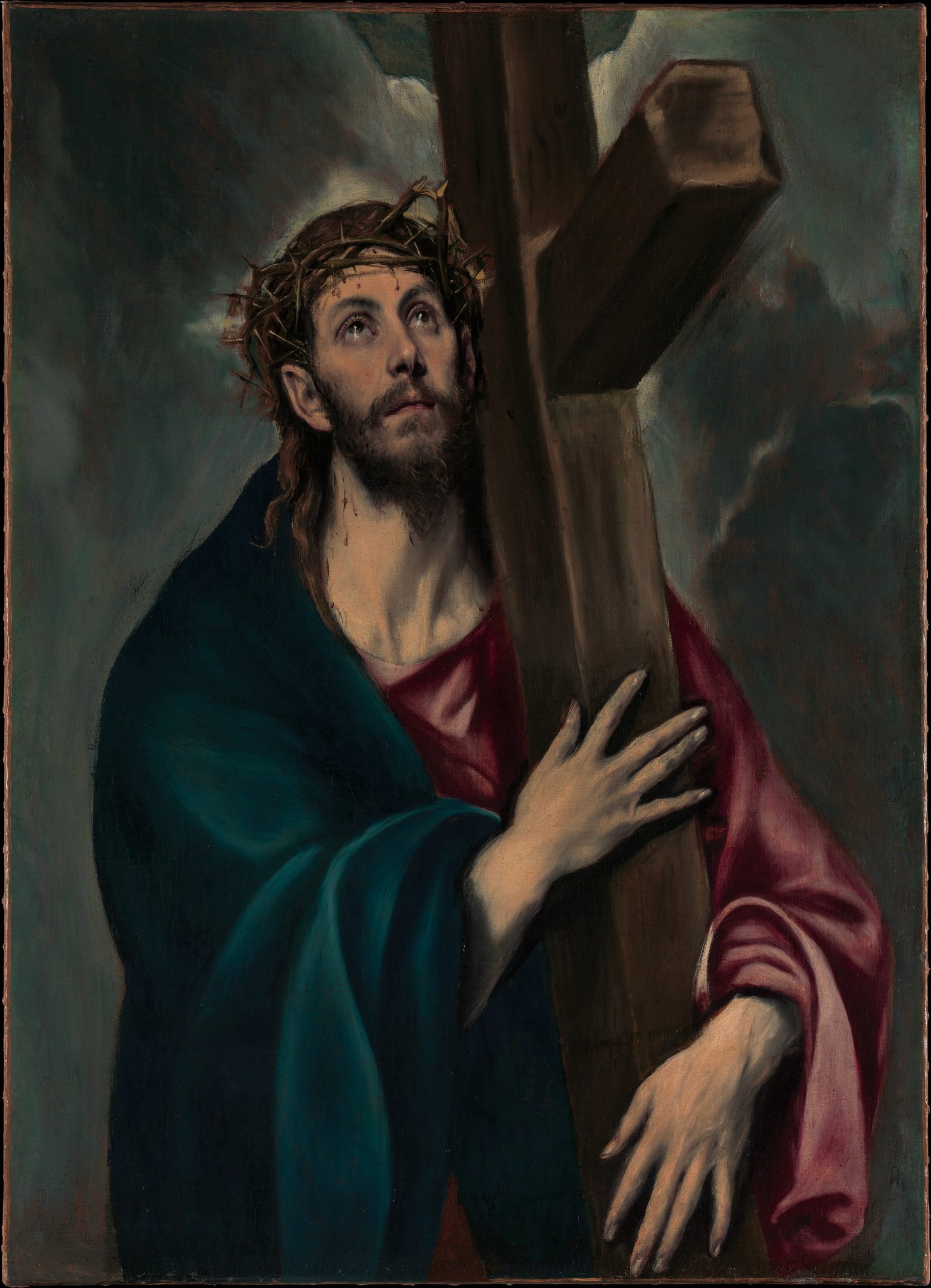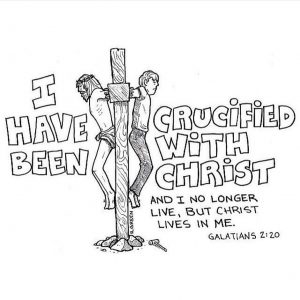
El Greco (Domenikos Theotokopoulos) Greek
ca. 1577–87
During his long career in Spain, El Greco produced numerous paintings of Christ carrying the cross. The Lehman canvas, arguably his earliest version of the subject, is not a narrative scene: no other figures are represented and the setting is not recognizable. Instead, it is a devotional image of haunting immediacy and resonant with pathos. Christ’s willing sacrifice for mankind is expressed through his gentle embrace of the cross and his heavenward gaze.
This devotional image, one of the finest by El Greco, was probably painted about 1580-85, to judge from the comparatively normative proportions and sense of volume in the figure, the restrained expression, and naturalistic handling, which is especially evident in the crown of thorns, the hair and beard of Christ (see J. Brown in Sterling et al. 1998, p. 173). At least seven versions of this composition are known, not including those of a somewhat different type in which Christ gazes to the upper left and holds an upright cross (see Christiansen in New York-London 2003-4, p. 148, noting the influence on this type of Michelangelo’s marble Risen Christ in Santa Maria sopra Minerva, Rome). Considering its style and exceptional quality, the Museum’s Christ Carrying the Cross is likely to have been the first that El Greco painted in Spain.
The subject, which isolates Christ from narrative scenes of the Way to Calvary, was developed mainly by northern Italian artists of the early 1500s such as Giovanni Bellini, Sebastiano del Piombo, Andrea Solario, and others. El Greco probably saw Sebastiano’s Christ Carrying the Cross (State Hermitage Museum, Saint Petersburg), painted in the mid-1530s for Fernando da Silva, 4th Conde de Cifuentes (d. 1546), who took it to Spain where it entered the royal collection. The picture, on slate, was treasured by Philip II and hung in the monastery of El Escorial. It was evidently well known to certain artists, in particular Luis de Morales (ca. 1520–1586?) who painted several versions of the composition, with a more pathetic and cadaverous Christ (one example, dated 1566, is in the Museo del Patriarca, Valencia).
In El Greco’s treatment of the subject he departs strongly from the suffering type of Christ, bent under the weight of the cross, and established a new type in which the Savior looks rapturously up to God, and embraces the cross as an instrument of his own salvation. The frontal pose and upward glance recall some paintings of the Risen Christ by North Italian masters (such as Ambrogio Bergognone and Andrea Previtali), and of martyred saints such as Saint Sebastian. During the late 1570s and early 1580s El Greco painted a number of saints, and Christ himself, in similar attitudes, for example Saint Sebastian (the large canvas in Palencia, of about 1577–78), Mary Magdalene in Penitence (early 1580s; Worcester Art Museum), Saint Peter in Penitence (1580s; the Bowes Museum, Barnard Castle, County Durham), and the serene figure of Christ, indifferent to his tormentors, in The Disrobing of Christ (“El Espolio”), of 1577–79, in the sacristy of Toledo Cathedral.
El Greco’s idea of Christ Carrying the Cross was a remarkable departure from the norm in Spain, where an emphasis on his suffering is found throughout the 1500s and 1600s, in paintings, polychromed wooden sculpture, religious processions, and spiritual literature. It seems likely that Saint Teresa of Avila (1515–1582), who had influential followers in Toledo, may be counted among those who encouraged El Greco’s conception of Christ in severa








































